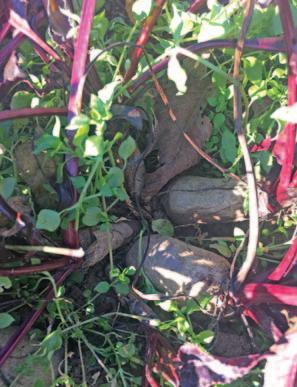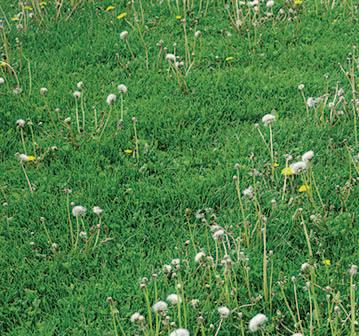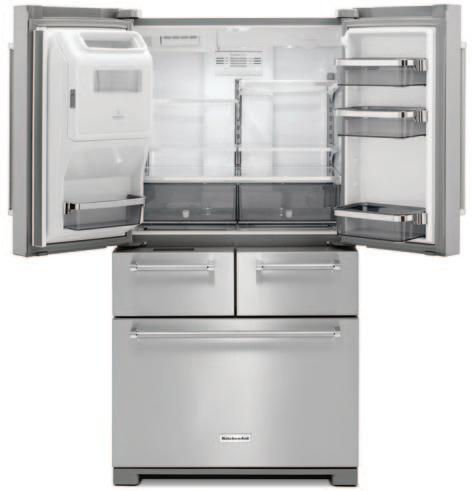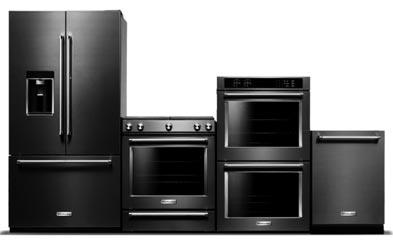
10 minute read
Grow Bulbous Beets

Hannah Lepsch Bulls Blood beets for greens. Photo: Pam Dawling, Sustainable Market Farming Blog

For those who have more questions please contact N.C. Cooperative Extension – Yadkin County Center at 336.849.7908 or by email at hannah_lepsch@ncsu.edu.
Successful Edibles Series Grow Bulbous Beets
Your fall vegetable stores have dwindled, and six months have elapsed since fat tomatoes and zucchini (never thought you’d miss them) proliferated the kitchen counter. Extend your harvest into the early spring “shoulder” season with a cool season crop like beets. Growing a “shoulder vegetable” is an opportunity to renew fresh harvests before summer crops are even planted.
Garden beets (Beta vulgaris ssp. vulgaris), also called a beetroot or table beet, is a cold hardy biennial (requiring two seasons to set seed) grown as an annual for its edible root. It is a member of the amaranth family that includes swiss chard, spinach, and quinoa (and pigweed). Domestication enlarged the upper storage chamber of the root, resulting in the bulbous beetroot we eat. Beyond its tasty flavor (beets have highest sugar content of any vegetable), several scientific studies have shown beets help prevent heart disease and lower blood pressure. Beet roots are high vitamin C content to boost the immune system, a pertinent need this spring.
Not only do beets grow best under cool temps, but they’re actually sweeter and have a better color. Like other root vegetables, they are quite cold hardy and survive a freeze and much colder temperatures, 20°F. and below, without protection. Varieties include storage, bunching and specialty types, ranging in color from classic “beet red” to gold to red with white stripes. Ruby queen, red ace and bulls blood (for greens) are varieties that do well in our area. Lutz and Winterkeeper are excellent varieties for longer storing times that hold for months in the refrigerator. Commonly grown heirlooms are Chioggia, notable for its red and white striped interior and Cylindra, an elongated, slicing beet that is easy to chop for pickling or on salads.
Planting begins 4 to 6 weeks before the last spring frost— March 1 through mid-April in USDA hardiness zone 7 which is most of the Yadkin Valley. Most varieties mature in 50 to 60 days for harvest in May to June. Late planting is a frequent problem with beets pushing into hotter weather having underdeveloped, poor quality roots with lower sugar content. Fall beets should be sown 8 to 10 weeks before killing frost in late July through mid-August. While a fall planting may be sweeter growing into cold weather, plant establishment is more reliable with spring planting because beet seeds do not germinate/survive well in hot soil.
Beets are heavy feeders, requiring adequate nitrogen and phosphorus and loose soil to form a sizeable root. Be sure to apply a nitrogen source in a complete fertilizer or a nitrogenrich organic amendment like high quality compost or bloodmeal. Routine compost application opens up heavy clay soil and over time builds “fluffy” (or friable) soil needed to form a sizeable root. Take a soil test for accurate lime and fertilizer rates for your garden soil. In the absence of a soil test, apply 1 cup of general fertilizer such as 10-10-10 fertilizer per 10’ of row. Apply 50% before seeding in a 1 to 2’ wide band, and sidedress plants with the remainder at 4 and 6 weeks after planting. Boron is an important micronutrient for beets, causing a black spot to develop at the root center where deficient. Side dress a small amount (6 to 7 Tablespoons of per 1000 sf) of household borax, or even dissolve 1 Tablespoon of borax in 3 gallons of water and apply with a watering can over a 100’ row.
Prepare soil for planting by loosening with a spade, then follow with a rake to form a smooth, even seedbed of fine soil. Direct sow beet seeds ½ to 1” deep in rows spaced 15 to 20,” wide enough to keep weeds hoed between rows (beets do not compete well with weeds, so keep up with hand pulling weeds when they emerge). Gently tamp the soil or water in after planting. Beets, like other root crops, are not usually transplanted as disturbing roots can stunt their growth. Damping-off, caused by pythium spp and other soil-borne fungi, is common in cool, wet soils and shows up as rotting of seedling stems at the soil line. To prevent, grow on a raised bed or planting area to encourage good drainage.
Careful thinning is critical to get large, well-formed beetroots. I have seen several stunted or malformed beet crops where overcrowding was the likely culprit. The beet “seed” is technically a tiny fruit or seed ball with about 6 individual seeds. When planted, several seedlings will come up together to form a tight cluster. Shortly after germination, reduce the thickest of the clumps to one individual. Thin plants to 2 to 3” spacing after the plants have developed true leaves. Or wait until they are a little larger, and thin via destructive harvesting, whereby the harvested plants are also eaten. Eat beet tops or thinnings prepared like other greens such as collards. When very tender, greens can be eaten raw mixed with other salad greens. Their taste is similar to swiss chard but with a distinctive “earthy” flavor.
Consistent watering is also important especially during early establishment and root development. A uniform moisture supply will promote even, non-cracking root expansion. Aim to water deeply to 6” subsoil depth to maintain supply during dry periods and encourage deeper rooting. Straw or hay Chioggia Beet Photo: Suzies Farm Deformed beetroot from overcrowding. Take home message, thin ruthlessly!


mulch can be easily spread, and maintains even moisture and will insulate root tops in the event of a hard freeze.
Harvest by pulling every second beet in the row to give extra space to remaining plants. When harvesting, break the tops off so the greens don’t regrow and suck nutrients out of the roots. Rinse off dirt before storing. Store in the crisper or fridge for best shelf life. Beets should be good for 2 plus months. Plan to wrap up your harvest by the end of June (perfect timing for rotating to a late summer or fall crop). Roots that maturing in hot weather (above 80-85°F.) become woody, fibrous and small. Timely planting so you can harvest prior to the onset of summer heat is key growing high quality and sweet beets.

Before and After

Visit LTD and Learn how to Control Weeds in your Yard


1073 Meadowbrook Drive, King
www.ltdfarmandgarden.com
336-983-4331 M-F 7:30-5:30 • Sat 7:30-1
Clemmons Milling Co. 4010 Hampton Road, Clemmons
336-766-6871 M-F 8-5 • Sat 8-1


Spring Ephemerals Native Plant Showstoppers WRITER & PHOTOGRAPHER
LESLIE ROSE Horticulture Agent, N.C. Cooperative Extension, Forsyth County Center, Director of the Arboretum, Tanglewood Park Top left: Trillium Erectum Insert: Mertensia Virginica Above: Tiarella Cordifolia

Growing plants in the shade is a common challenge for gardeners in our area. Large trees provide a variety of benefits and beauty, but limit the availability of sunshine for plants growing below them. In shady spots, many gardeners rely on foliage plants for year-round interest. Some common choices are Hosta, Helleborus (Lenten rose or hellebore), and Heuchera (coral bells). These traditional choices generally feature unique foliage that offers interest throughout the year in the form of color and texture.
In addition to traditional plant choices for shade, native spring ephemerals offer interest in shady areas. Spring ephemerals get their name from their short-lived blooms. They are typically low-growing plants found in the understory of the forest floor. If you’re lucky enough to catch these plants in bloom during a walk or hike, you are in for a treat. A variety of spring ephemerals can be found growing in the Wildflower Garden at the Arboretum and Gardens at Tanglewood Park in Clemmons. Typically, this garden is at its most colorful during early spring, usually beginning in late March and continuing through early May (depending on the weather). The colors of the blooming spring ephemerals stand out in the shade on any spring day.
Another reason to appreciate spring ephemerals is they are native plants, meaning they have naturally evolved in our area. A growing number of gardeners are adding native plants to their yards. Native plants possess a number of advantages over non-native plants. In general, native plants are adapted to the conditions in our area; when planted in the proper place, native plants are well-positioned to thrive. In addition, native plants provide resources for native pollinators and other wildlife. These plants can provide food in the form of pollen, nectar, fruit, and seeds, as well as shelter for many native insects and other wildlife. While you can enjoy these plants in their natural habitat, you should avoid removing them from the wild. Some spring ephemerals are rare and face the threats of habitat loss and fragmentation.
Though the blooms of spring ephemerals are fleeting, many of these plants maintain unique foliage that adds interest to the garden throughout the year. In addition, spring ephemerals are perennial plants that will return year after year. Bloodroot (Sanguinaria canadensis) features bold, lobed leaves resembling the shape of a hand. In the spring, the blooms of bloodroot are bright white and stand out in the shade. Another spring ephemeral featuring white flowers is foamflower (Tiarella cordifolia). The flower spikes appear in clusters, resembling clouds of foam. Some varieties of foamflower also have variegated leaves.
In addition to white, the flowers of spring ephemerals bring a variety of other colors. Virginia bluebells (Mertensia virginica) have blue flowers, a rarity in most gardens. Green and gold (Chrysogonum virginianum) is a groundcover with yellow flowers. The foliage forms a mat at the surface of the ground and remains evergreen through the winter. Trillium can be identified by their leaves that occur in threes. A variety of trillium species bloom in various colors, including pink, red and white.
Spring ephemerals are a special treat for anyone looking forward to the promise of spring in the garden. I hope you are able to enjoy these spectacular blooms on a shady, springtime walk.


now through July 31, 2021

Choose from: cooktops single wall ovens double wall ovens builtin microwaves warmer drawers ventilation systems sidebyside refrigerators bottomfreezer refrigerators ice makers wine cellars beverage centers refrigerator drawers plus get a bonus $300 for commercialstyle cooktops, or ranges or ventilation systems Ask about the $500 refrigerator bonus for BuiltIn SidebySide and BottonFreezer Refrigerators
For all the rebate details and a complete listing of eligible appliances visit Brannock & Hiatt


Since 1962 a 3rd Generation, Family Owned and Operated Local Business
420-422 North Main St., Mount Airy Store (336) 786-8659 Service (336) 786-4442
info@brannockandhiattfurniture.com
Monday to Friday 8:30 5:30 Saturday 8:30 2:00
Visit our exciting, expanded web site! www.brannockandhiattfurniture.com Explore our selection, apply for a Brannock Hiatt Credit Card, make on-line payments, you can even set up repair requests! FREE 12 MONTHS SAME AS CASH On Approved Credit





